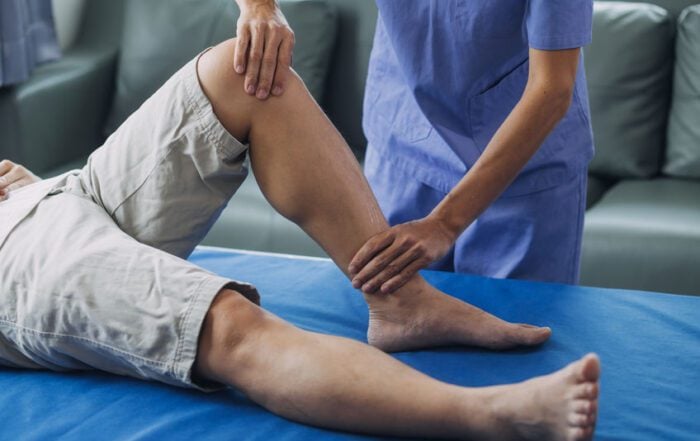Restoring What’s Torn
The bicep is a long muscle that splits into a long and short head. These parts connect to the shoulder and elbow via strong, rope-like tendons. Sometimes, the long head tendon tears off the shoulder due to injury or overuse. In some cases, the tendon affects the labrum, the cartilage surrounding the shoulder socket. This damage creates a superior labrum from anterior to posterior (SLAP) tear. Bicep tenodesis is a surgical procedure to repair and reattach the tendon, but this is just the start. The patient must go through rehabilitation to regain maximum use of the arm.

What happens during bicep tenodesis?
Bicep tenodesis combines sutures and screws to attach the tendon to the humerus. The surgeon uses general anesthesia, meaning the patient will be asleep during the procedure. An incision is made on the arm to access the tendon. The surgeon ensures the tendon is fully dislodged from the shoulder and cleans any debris. Next, the surgeon passes the suture through the tendon several times. A small hole is drilled through the humerus, and the tendon is pushed into the space. The surgeon will then secure the tendon with a screw and plate. This procedure takes between 1-2 hours, depending on the technique.
Time for recovery
The surgery should reduce shoulder and bicep pain. However, this is dependent on a smooth, systematic recovery. The arm will be in a sling for about 4 weeks. During the first 2 weeks, the patient will focus on pain management using ice packs and medication. The first week also signals the start of physical therapy (PT) appointments. The goal of treatment is to minimize pain while restoring strength and range of motion (ROM) to the shoulder. The patient may see the physical therapist multiple times each week and do additional therapy at home.
The power of rehab
Rehabilitation takes several months, with the first month focusing on gentle shoulder and elbow movement. The intensity and weight will increase each week based on the patient’s progress. The sling comes off around 4 weeks post-op. The patient will continue to perform more exercises to help the arm and elbow reach full ROM. This period can last several more weeks, with and without weights. By weeks 10-12, the patient should have a full range of motion.
Stick with it
From week 12 onwards, the goal is to build more strength and endurance. Exercises include bicep curls, shoulder shrugs, using medicine balls, and stretching. However, most patients still cannot push, pull, or lift heavy objects for long periods. On average, the entire rehabilitation process can take 4-5 months. After this point, the patient will be monitored occasionally to ensure no long-term complications arise. Most patients can return to sports or other intensive activities after 6 months.
A stronger arm
Bicep tenodesis is necessary to repair a damaged shoulder and bicep. However, the procedure must be accompanied by several months of rehabilitation for the best results. Combining exercise, stretching, and massage can help the patient resume daily activities sooner without fearing pain.
Recent Posts
ACL Repair: Will You Have Range Of Motion With Your Knee After Recovery & Physical Therapy?
After an ACL injury, ROM can be negatively affected. ACL repair surgery helps restore function, but physical therapy is essential to ROM.
Arthroscopy: What Are The Benefits Of This Minimally Invasive Outpatient Orthopedic Procedure?
Arthroscopy can help diagnose or treat joint conditions. Benefits of the MIS include faster recovery, less pain, and fewer scars.
Posterior Interbody Lumbar Fusion: What Are The Benefits Of PLIF For People With Back Pain?
People with chronic back pain may benefit from posterior interbody lumbar fusion surgery. PLIF can reduce pain and improve stability.
Saying Goodbye To Tonsil Troubles: The Benefits Of Minimally Invasive Tonsillectomy
Chronic tonsilitis or other tonsil troubles can impact health and well-being. A minimally invasive tonsillectomy can reduce infections.








